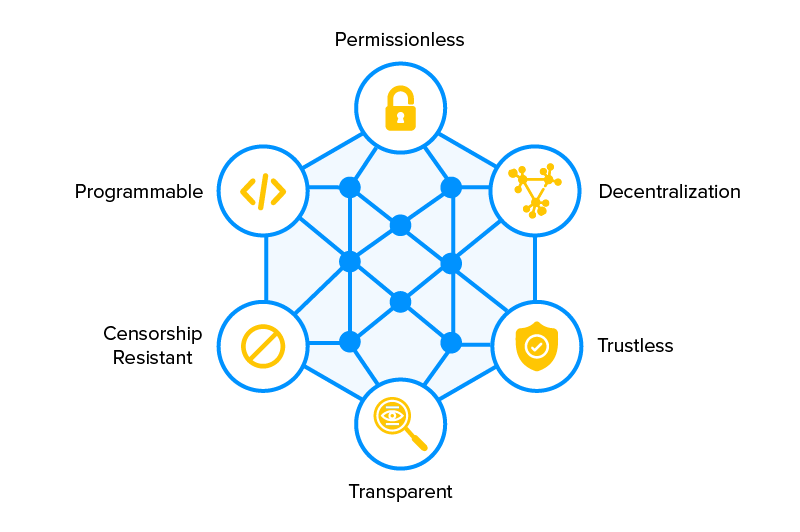Open finance, also known as decentralized finance (DeFi), is the technological transition from a closed financial system to an open financial ecosystem built on public blockchains.
DeFi is built on smart contracts, establishing programmable open protocols and decentralized applications, and is primarily based on the Ethereum blockchain as the main infrastructure (DApps).
According to the World Bank, over 1.7 billion adults worldwide do not have access to a bank account. Despite the fact that the objective of financial inclusion is becoming more popular, the disparity persists. As a result, DeFi comes into play.
DeFi’s purpose is to leverage blockchain technology to rebuild the global banking system in a more secure and permissionless way.
Similar to building LEGO block structures, a connected financial network connects DApps. DeFi aims to restructure financial use cases like trading, investing, lending, payments, asset management, insurance, and more.
Powered by smart contracts working alongside each other, the open financial economy intends to be composable, interoperable, and programmable.
1. Key Components of DeFi
The key features of blockchain are what enable DeFi to address the difficulties of the current financial system. Here are some of DeFi platform features:
- Permissionless: Everyone has open access to a public network. In this instance, a person can use the services regardless of geographical location, social status, or financial rank.
- Decentralization: The network is maintained by thousands of computers. This means all participating nodes have complete control over the transactions.
- Trustless: Direct transactions between individuals are handled via blockchain, eliminating the need for an intermediary. As a result, the network ensures no double-spending and legitimacy.
- Transparent: Network participants can examine and monitor all transaction records. This also limits the possibility of manipulation because the entire community will be informed.
- Censorship-Resistant: Anyone can transact on the network as long as they follow the protocol’s regulations. A transaction cannot be undone from the network once it has been completed.
- Programmable: Smart contracts deploy automatically based on the events set. This reduces processing time and the possibility of human error.
- Interoperability: By removing transactional restrictions, DeFi enables platforms to collaborate and complete one another for optimal efficiency.
- Composability: This refers to the idea that additional protocols (usually based on Ethereum) can be selected and created in different ways without difficulty.
2. Core Benefits of DeFi
DeFi, as previously said, is constructed on top of a blockchain. It is a collection of secondary layers made up of DApps and their underlying open protocols. This is only likely because of blockchain technology. Here are some examples:
- Speedy and low-cost transactions: Different DeFi protocols seek to provide instant and affordable transactions to users daily.
- Immutability of financial contracts: Once a contract has been deployed, its requirements must be precisely followed and any transactions within the contract cannot be changed.
- Contract automation: Smart contracts are automated and computer-generated. This enables quick processing and turnaround time.
- Non-custodial system: DeFi gives full control of the financial transactions to the public. Thus, it is the user’s responsibility to keep their private keys secure.
- Increased ecosystem transparency: Unlike traditional financial infrastructure settings, which tend to have loopholes and discrepancies, decentralization seeks to promote transparency for all.
- Minimal principal-agent risk: Due to the decentralized nature of smart contracts, any ethical hazard or conflict of interests among the community members is avoided.
3. Examples of Blockchain Platforms for DeFi
1. Ethereum
Startups and corporations have recognized the power of open-source networks to transform and decentralize economic activity. Notably, Ether (ETH) has been primarily employed as the base asset and key source of collateral in DeFi ventures.
The Ethereum platform, by far the largest blockchain-based smart contract ecosystem, facilitated DeFi’s expansion. It empowers developers to construct DApps, resulting in an open financial system with minimal to no engagement from financial institutions.
As a result, the majority of DeFi adoption is linked to Ethereum’s scalability and usability. DeFi applications can be created by anyone who can write smart contracts. As a result, the vast majority of DeFi protocols rely on this platform.
2. Bitcoin
The Bitcoin blockchain is also a popular alternative for DeFi developers, as the Lightning Network layer enables the development of DApps and the implementation of smart contracts.
In fact, Bitcoin provides an alternative and reliable architecture for DeFi. Indeed, the ease of use of this platform makes some developers confident in Bitcoin Core’s security. It has been shown to work well and securely throughout the years.
3. EOS
DeFi is also an important component of the EOS ecosystem. EOS has demonstrated enormous promise in delivering decentralized finances.
EOS is one of the most scalable and best-performing blockchains in the business, capable of supporting DeFi DApps and protocols for general adoption.
